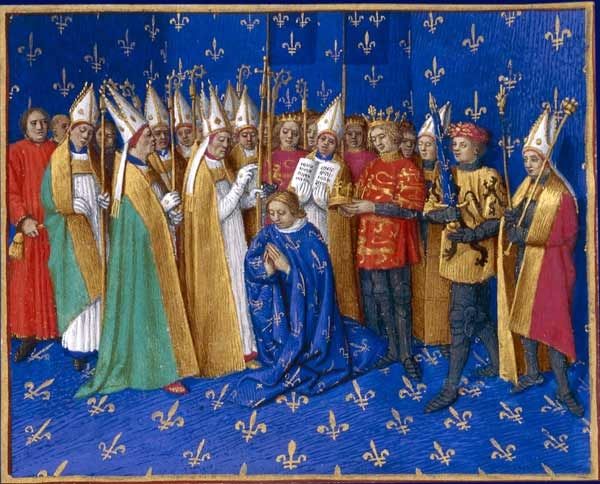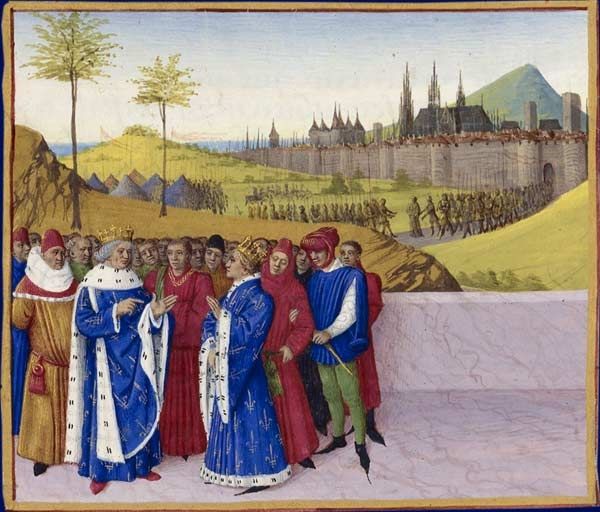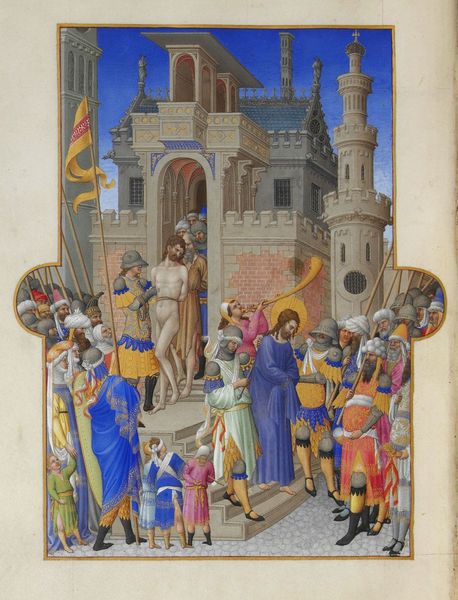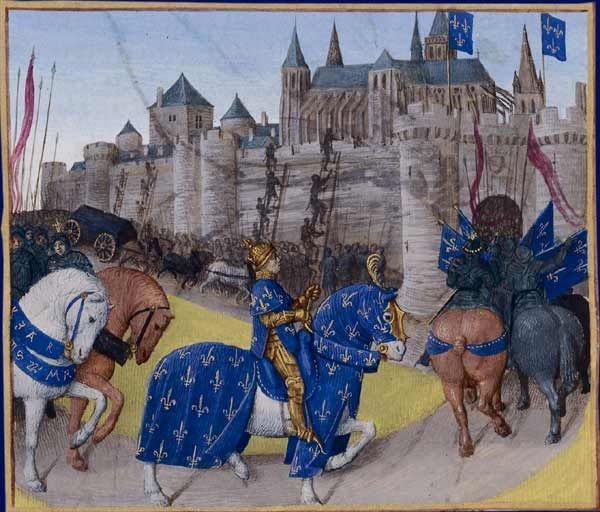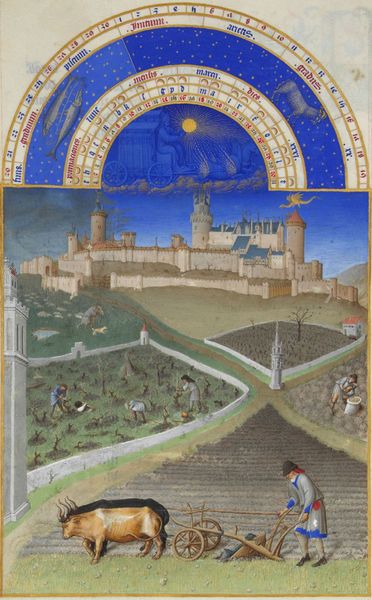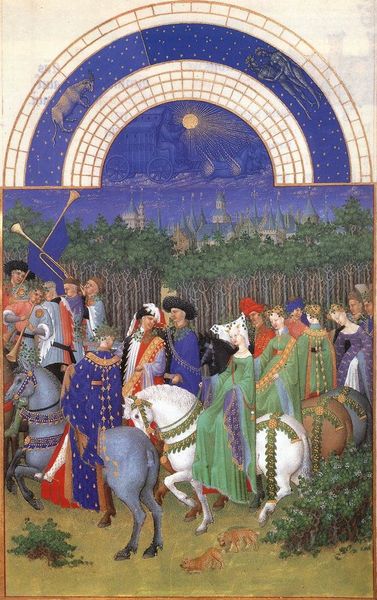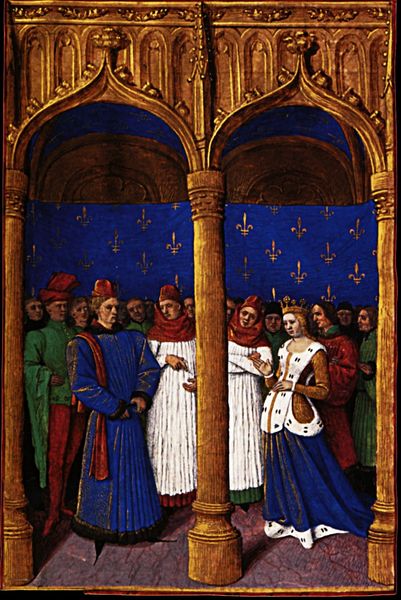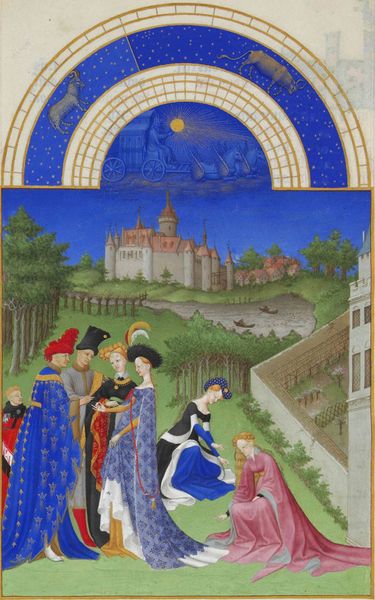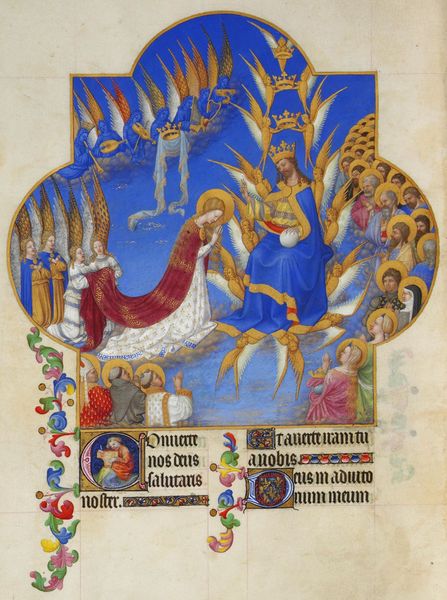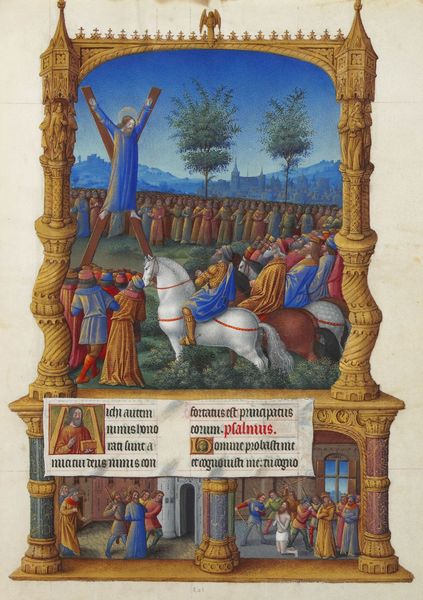
tempera, painting, textile
#
portrait
#
medieval
#
narrative-art
#
tempera
#
painting
#
textile
#
oil painting
#
painting art
#
history-painting
#
international-gothic
#
miniature
Copyright: Public domain
Editor: Here we have Jean Fouquet’s "Coronation of Lothair," created around 1460, using tempera. It’s captivating how the artist manages to fit so much detail into what seems like a small space. There are strong blocks of color, the blue particularly, dominating the composition, giving it a heraldic quality. What are your observations regarding its construction? Curator: Indeed, the composition hinges on several key formal devices. The division into distinct planes, the foregrounded procession juxtaposed against the background scene of a tented encampment, creates a deliberate sense of spatial compression. Observe how Fouquet uses line— the verticality of the flags and spears—to counteract the flatness imposed by the dominant blocks of color. Do you see how this interplay animates the scene? Editor: I do. The use of gold throughout also gives it a hieratic feel, raising the importance of the coronation itself. But what about the somewhat...unnaturalistic space? Is that intentional? Curator: Precisely. The flattening of perspective is a stylistic choice common in the International Gothic style. This directs our attention to the intricate details and symbolic elements rather than striving for illusionistic depth. Focus on the textile patterns, the precise rendering of the figures’ attire – notice the emphasis on surface ornamentation over three-dimensionality. What effect does this emphasis on detail have, do you think? Editor: I see. It feels as though the details themselves are telling a story or carrying weight, independent of the spatial setting. Curator: Exactly. Fouquet’s emphasis lies in constructing a visual narrative through symbolic elements and meticulous execution, prioritizing clarity and significance over naturalistic representation. Note how each figure, though part of a larger group, is rendered with individuality and precision, contributing to a rich tapestry of textures and forms. Editor: I hadn't thought of it that way, seeing how the surface contributes to the overall meaning. It really underscores the artistry within this approach. Curator: It exemplifies how close formal reading reveals meaning beyond the mere depiction of a historical event, unveiling Fouquet’s skill in manipulating visual elements to create a complex and engaging composition.
Comments
No comments
Be the first to comment and join the conversation on the ultimate creative platform.
